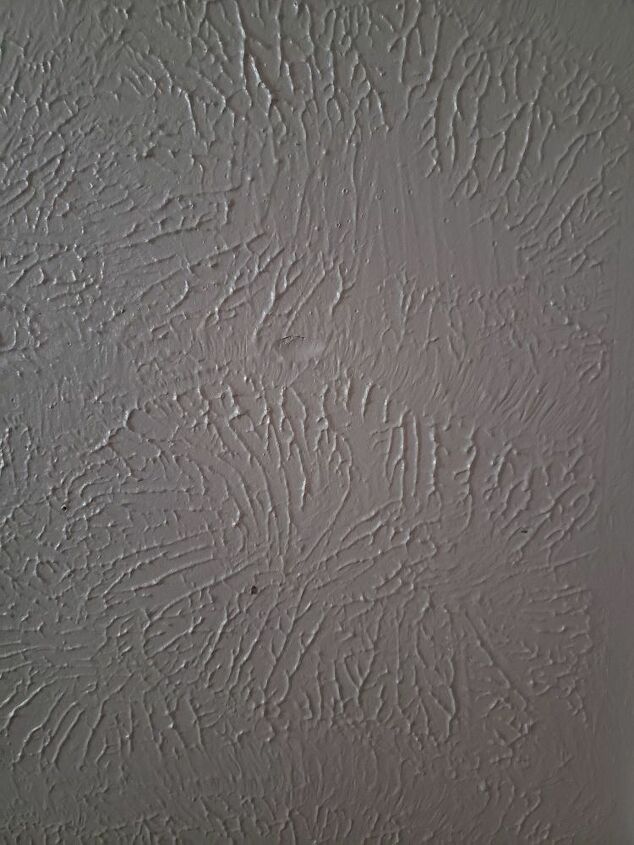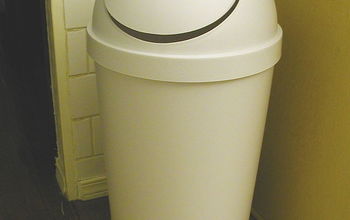Wall texture removal

Related Discussions
How to get rid of mice?
We seem to have some unwelcome Mickeys and Minnies in our house. What is the best way to get rid of them?
How to remove popcorn ceiling with asbestos?
I want to remove my popcorn ceiling, but it has asbestos in it. How do I go about this safely?
How to caulk baseboard gaps?
How do I fill gaps at baseboard, should I caulk? If so, does anyone know how to caulk baseboards?
How to fix squeaky hardwood floors?
How do I fix squeaky hardwood floors?
How can I match existing wall texture when repairing the walls?
Hi Everyone!!I always get great advice and I am back with another question.I am having an issue matching the wall texture that was done before I purchased the home. I... See more





Get your selves Disposable Decorators Suits - Face Masks To be honest it might pay you to Have all the Walls Re-Skimmed rather than have the mess (Because they used to use Asbestos in the early "Artex") Be Prepared for a whole load of dust descending long after you finish doing the job! Good Luck!
I agree with John. Due to the possibility of asbestos it would be better in the long run to have it re-skimmed. I have a room where the ceiling is like that. I just decided to leave it alone and let it be the ceiling of interest in that bedroom.
A palm sander? I hope he has lots of spare time. First you need to determine if you are working with sheetrock or actual lathe and plaster. Tape the rooms off as it is messy dusty work, so wear proper protection. Plaster crumbles when it gets old. I am worried that whatever tool you found at the home improvement store will end up causing you more work than it is really worth. If you want the texture gone quicker, I would just rip it down to the studs and install new, clean sheetrock. Faster, easier and even a tad bit cleaner.
I agree, I do this for people, I would encapsulate it, here is an easy technique... https://www.youtube.com/watch?v=jeGWbgAUvCM
You probably won't be able to sand it off, cause the old timers didn't use joint compound, they used mortar, and it can be rock hard. I know.... my bedroom in my 40s house has this.
One nice paint technique is to make it look like venetian plaster.... https://www.youtube.com/watch?v=FFp-TpGGpaU I would stick to 2-3 tones of the same color, skip that teal
https://www.youtube.com/watch?v=4VqkvqOU5Ls - tutorial
Since you've already got the texture, it looks very similar to venetian plaster.
Ha Ha. I agree with Naomie. Palm sander will take forever and I hope you bought stock in a sandpaper company. I would tear the walls down to the studs. At the same time check what insulation is there if any. Replace/add new insulation and put up drywall. Cheaper, less time, and less mess. As for the trim paint have it checked for lead before doing anything. If there is lead present you will need to have it professionally removed.
1940's -
If you have texture, it's likely Artex which had asbestos in it to help hold the shape of the texture.
I agree with Naomie - except before you start the removal down to the studs you need to get the walls tested for asbestos and if positive, have it professionally removed.
You have to have a license to dispose of asbestos because of its major health risks when disturbed.
Hope that helps
: )
To amend here: I neglected to mention that the texturing was done during the past 5 to 10 years; this was a house was a boarding house at one time; so the necessary improvements as to upgrading to code have been done; but they did the texture with a stippler and drywall plaster that comes in 5 gallon bucket, and it was done within the past several years. House inspection last year, before we purchased, came back clean of asbestos; because it needed to in order to sell...specifically states that the texture is asbestos free